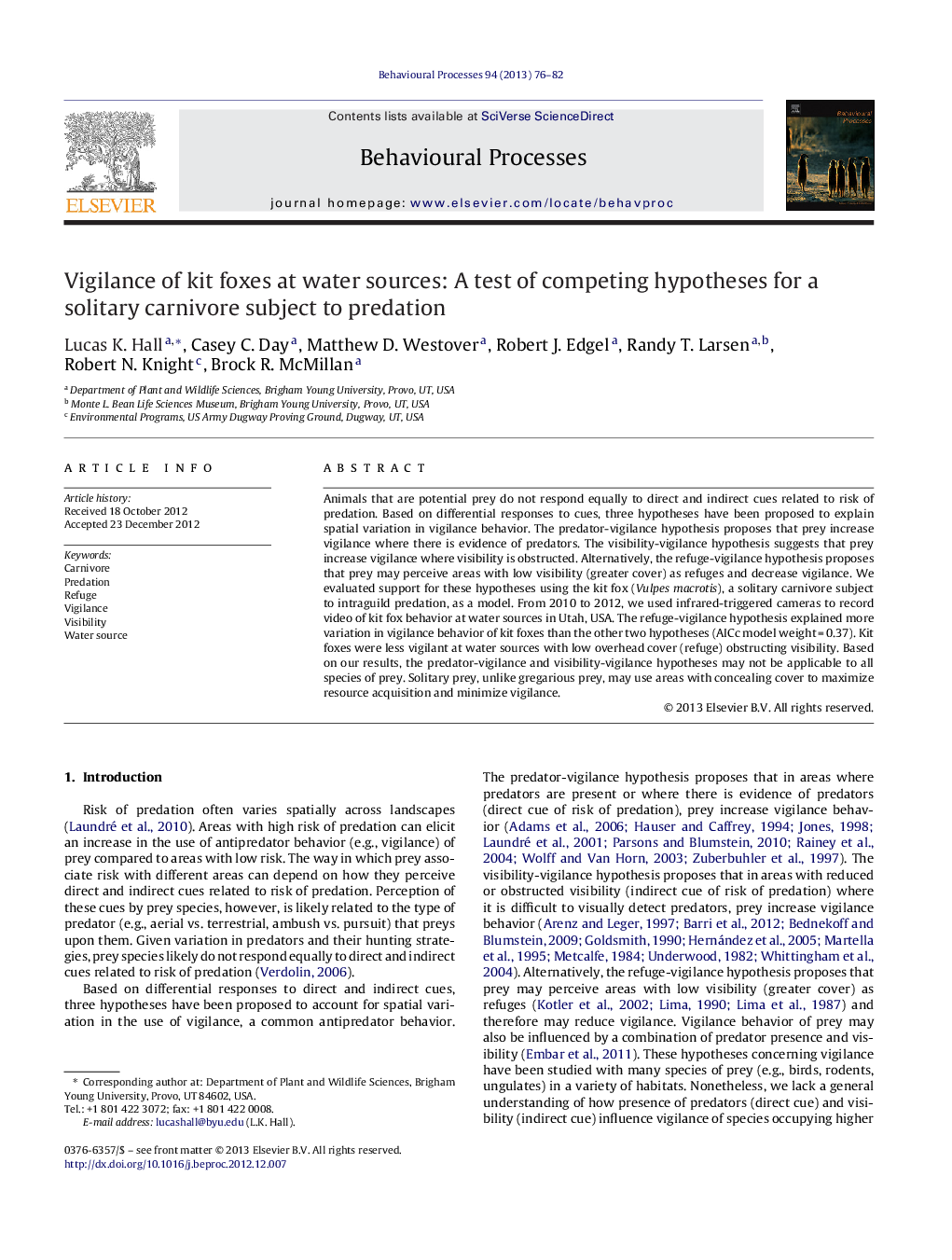| Article ID | Journal | Published Year | Pages | File Type |
|---|---|---|---|---|
| 2426912 | Behavioural Processes | 2013 | 7 Pages |
Animals that are potential prey do not respond equally to direct and indirect cues related to risk of predation. Based on differential responses to cues, three hypotheses have been proposed to explain spatial variation in vigilance behavior. The predator-vigilance hypothesis proposes that prey increase vigilance where there is evidence of predators. The visibility-vigilance hypothesis suggests that prey increase vigilance where visibility is obstructed. Alternatively, the refuge-vigilance hypothesis proposes that prey may perceive areas with low visibility (greater cover) as refuges and decrease vigilance. We evaluated support for these hypotheses using the kit fox (Vulpes macrotis), a solitary carnivore subject to intraguild predation, as a model. From 2010 to 2012, we used infrared-triggered cameras to record video of kit fox behavior at water sources in Utah, USA. The refuge-vigilance hypothesis explained more variation in vigilance behavior of kit foxes than the other two hypotheses (AICc model weight = 0.37). Kit foxes were less vigilant at water sources with low overhead cover (refuge) obstructing visibility. Based on our results, the predator-vigilance and visibility-vigilance hypotheses may not be applicable to all species of prey. Solitary prey, unlike gregarious prey, may use areas with concealing cover to maximize resource acquisition and minimize vigilance.
► We tested three competing hypotheses regarding vigilance of prey at water sources. ► Kit foxes were less vigilant at water sources with obstructed visibility. ► The refuge-vigilance hypothesis explained the most variation in vigilance behavior. ► Solitary prey may use concealing cover to maximize drinking and minimize vigilance.
